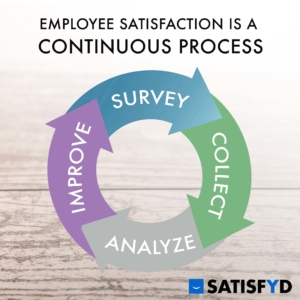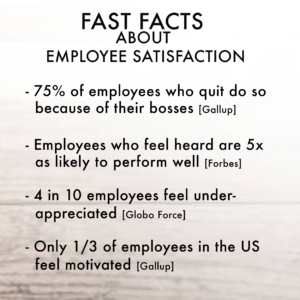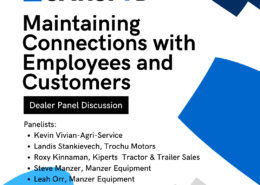Your employees are more than the most valuable asset of your business: in many cases they become like family. You care deeply about their well-being and want to be sure they are happy being part of your team. From a purely business perspective, employee happiness directly impacts your bottom line through low staff turnover, increased productivity, and top-notch customer service. In fact, a recent Gallup study revealed that highly engaged and satisfied teams can increase profitability by 21%!
So, it’s clear that ensuring employee satisfaction is a key component of running a successful business, but how do you measure something as nebulous and nuanced as “satisfaction?”
Getting the Real Picture
There is one question you can ask that reveals all: would you recommend this dealership as a great place to work to your best friend? It seems simple enough, but this casual question carries so much weight: the answer considers everything from compensation and daily experience to company vision and opportunity. And ensuring that the answer to that question is a resounding YES requires some careful examination of the foundations of an employee’s experience.
First, you need to know if your employees have confidence in the business itself. They obviously must believe that your products and services are of the highest quality and value. In addition, they must support the vision and direction of your business, and importantly, have faith in the integrity of your business practices. An understanding of your goals and having a sense of connection with the management team and the decision making process contribute to a thumbs-up as well.
Staying Connected to Your Employees Is Not a One-Time Thing
Success in these areas doesn’t just happen. It requires an intentional and disciplined approach to measuring where employees are today, identifying gaps where improvements can be made, and continuously monitoring the situation to make sure that your actions are effective.
 A major challenge to measuring employee satisfaction is that most employees are hesitant to raise issues directly to their employer. Therefore, it’s best that you engage with a third-party resource to conduct an anonymous assessment of your employees. These assessment surveys should include carefully crafted questions that can reveal both common themes as well as individual concerns, and the results should be used to drive actionable change in your business. Finally, employees should be re-surveyed on a regular basis so that you can monitor trends and ensure the effectiveness of the fixes you put in place.
A major challenge to measuring employee satisfaction is that most employees are hesitant to raise issues directly to their employer. Therefore, it’s best that you engage with a third-party resource to conduct an anonymous assessment of your employees. These assessment surveys should include carefully crafted questions that can reveal both common themes as well as individual concerns, and the results should be used to drive actionable change in your business. Finally, employees should be re-surveyed on a regular basis so that you can monitor trends and ensure the effectiveness of the fixes you put in place.
When you are ready to get started check out the eBook on Best Practices for an Employee Engagement Survey. Taking this focused approach will ensure that your employees are as big of fans of you and your business as you are of them, and will guarantee that the answer to the best friend question is always YES!








